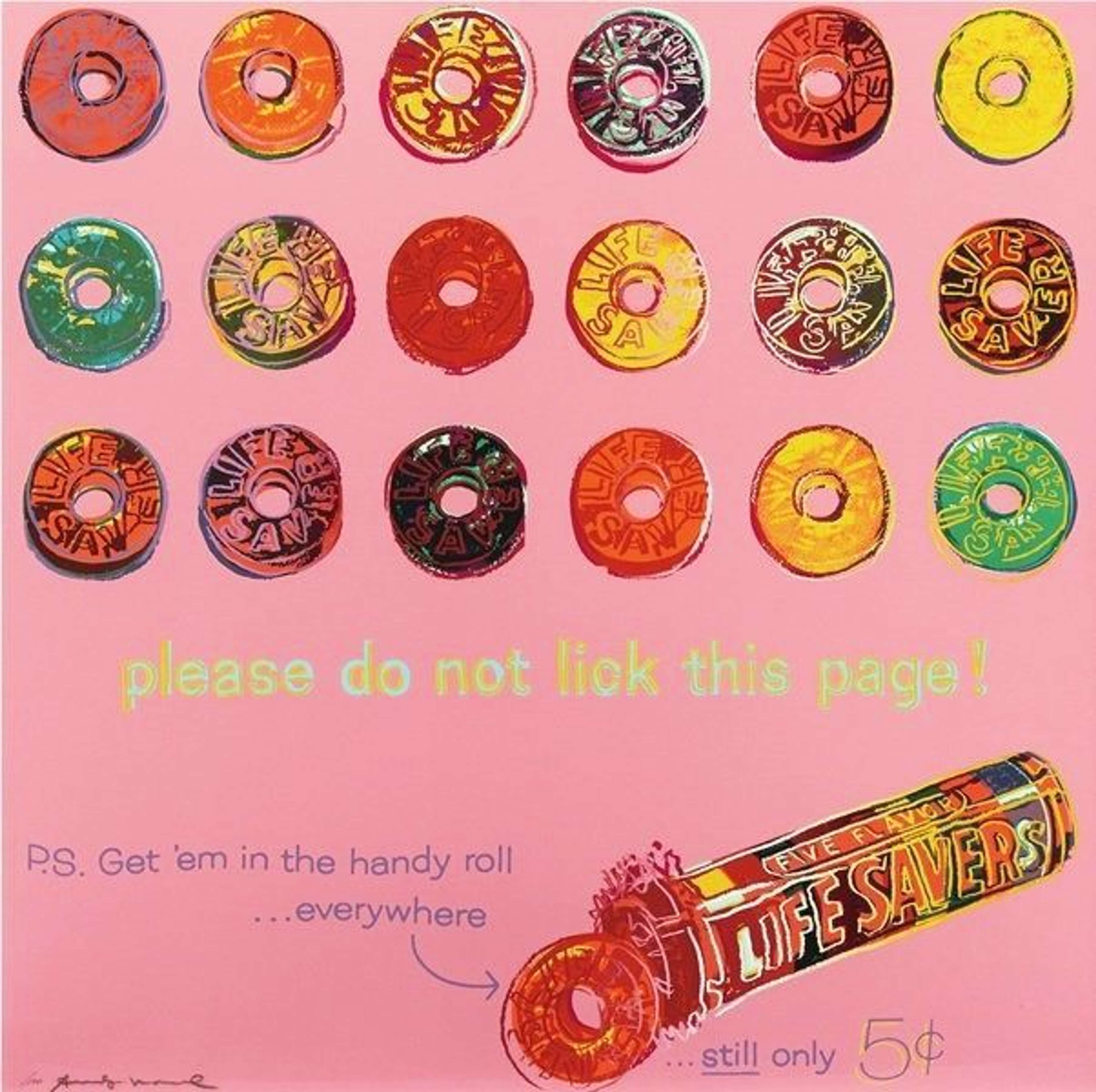 Ads © Andy Warhol 1985
Ads © Andy Warhol 1985
Interested in buying or selling
Andy Warhol?

Andy Warhol
487 works
From the early days of his career, Andy Warhol was drawn to the world of advertisement, in particular the mystery of the commercial objects’ alluring nature. Emerging in 1985, Warhol's Ads series touches upon the traps of commodification, wealth, and luxury.
The Ads series derives from Warhol’s interest in the fashion world and fascination with New York’s glamorous celebrities.
 Blackglama (Judy Garland) (F. & S. II.351) © Andy Warhol 1985
Blackglama (Judy Garland) (F. & S. II.351) © Andy Warhol 1985The Ad series appropriates the visual language of marketing to reimagine the icons and artefacts of New York’s fashion world. Warhol’s prints incorporate advertising slogans, logos of some of the most prominent fashion brands as well as overt references to beauty products that pervaded the consumer culture at the time. Notably, Judy Garland features in the portfolio next to a popular tagline: “What becomes a legend most?”. Warhol’s way of invoking Blackglama Fur’s advertising campaign reminds us of his background in commercial illustration.
Advertising and consumerism are the central themes of Warhol’s oeuvre.
 Chanel (F. & S. II.354) © Andy Warhol 1985
Chanel (F. & S. II.354) © Andy Warhol 1985In his final thematic portfolio, Warhol explores the issues of commodification and wealth. The series recreates popular products that range from Volkswagen cars to Chanel No. 5 perfume bottles, as well as appropriating the likeness of public figures like James Dean and Ronald Reagan. In choosing these people and objects as his subject matter, the Ads series plays with the notions of ‘high’ and ‘low’ culture, problematising the world of commodity culture.
Each image in the series appropriates a corporate logo or product.
 Life Savers (F. & S. II.353) © Andy Warhol 1985
Life Savers (F. & S. II.353) © Andy Warhol 1985Ranging from Lifesavers to Chanel to Apple Macintosh, each product featured in the series appears next to a brand logo, which represents Warhol’s way of referencing the corporate powerhouses of his time. Based on popular advertising campaigns, the series reflects the commercial landscape of contemporary American culture.
Warhol chose some of the most powerful corporations in America to appropriate in his Ads series.
 Apple (F. & S. II.359) © 1985
Apple (F. & S. II.359) © 1985Companies such as Mobilgas, Paramount Pictures, Disney, and Apple Macintosh come to the fore of the series. Warhol’s appropriation of elements of their advertising campaigns captures his need to both celebrate the power of the visual sign and to look critically at the dynamics of capitalist production.
Warhol's selection of brands reflects the ambition of his art to mirror modern day society.
 Van Heusen (Ronald Reagan) (F. & S. II.356) © Andy Warhol 1985
Van Heusen (Ronald Reagan) (F. & S. II.356) © Andy Warhol 1985The Ads series engages with the power of signs and images while mirroring the consumer culture of Warhol's time. The presence of logos and elements of advertising campaigns in the prints urges the viewer to question what exactly draws people towards specific commercial products: quality or image.
In the Ads series, commonplace objects gain the status of art.
 Volkswagen © Andy Warhol 1985
Volkswagen © Andy Warhol 1985Taking advertising campaigns and commercial objects as its subject matter, the series elevates mundane elements of our surrounding reality. Warhol’s reproduction of Lifesavers and Paramount advertisements extracts them from the world of campaigns and brings them closer to that of art.
The series was produced through the medium of screen printing.
 The New Spirit (Donald Duck) (F. & S. II.357) © Andy Warhol 1985
The New Spirit (Donald Duck) (F. & S. II.357) © Andy Warhol 1985To capture the dynamics of mass production and paradoxes involved in the relationship between humans and commodities, Warhol engaged with the technique of screen printing. This process allowed him to reproduce photographs onto canvas and replicate images in large quantities, much like advertisements. The machine-like process shaped the Ad series, reflecting the artist’s statement that creating Pop Art was "being like a machine".
Icons of pop culture are central to the series.
 Paramount (F. & S. II.352) © Andy Warhol 1985
Paramount (F. & S. II.352) © Andy Warhol 1985The Ads series is characterised by Warhol's engagement with recognisable public figures, in particular stars of the silver screen. In one of the prints, the artist reappropriates the famous image of James Dean from Rebel without a Cause to explore questions of gendered rebellion and the outlaw archetype.
The pegasus in the series is a symbol of strength and speed, speaking to the priorities of modern America.
 Mobilgas (F. & S. II. 350) © Andy Warhol 1985
Mobilgas (F. & S. II. 350) © Andy Warhol 1985Warhol appropriated the image of Pegasus, a trademark of Mobil Oil Corporation, from a 1940s advertisement. The motif of Pegasus attests to Warhol’s fascination with historical iconography. Originating from ancient Greek mythology, the divine winged stallion is a powerful symbol of strength and speed.
Warhol ponders the fragility of life in this series.
 Rebel Without A Cause (James Dean) (F. & S. II.355) © Andy Warhol 1985
Rebel Without A Cause (James Dean) (F. & S. II.355) © Andy Warhol 1985Posing against a red background, James Dean appears twice in Rebel Without A Cause, his ghostly silhouette visible dimly behind the main contour. The actor’s ambiguous double presence speaks of the precarity of human existence, bringing to light Warhol’s interest in the subject of death and fame.
